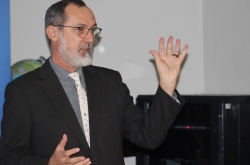
The South African National Space Agency received disappointing news that ISpace was unable to establish communication with the Hakuto-R Mission 1 during its landing on the moon's surface on April 25, 2023.The Hakuto-R would have been the first commercial space craft to land on the lunar surface and carried the Mohammed Bin Rashid Space Centre’s Rashid Rover as a payload. SANSA was tasked with establishing communication with the Rashid Rover as it arrived on the lunar surface from the SANSA Hartebeesthoek Ground Station.
SANSA was standing by to establish a communications link with the Rashid Rover from two antennas to track and communicate with the spacecraft. A 12-metre S-band antenna for uplink transmissions and a 26-meter parabolic antenna would have been commissioned for downlink transmissions.
Early indications from the ISpace team is that the lander used up all its fuel prior to landing and would have had early engine cut-off causing the lander to have hard landing. Eugene Avenant, SANSA Chief Engineer says: “It is important to temper expectations when it comes to moon missions, getting to the moon is not easy.”
Avenant, however says there are plenty of space exploration missions planned for the next couple of years – all of which would need to communicate with the earth. SANSA has established itself as a world-class provider of telemetry, tracking and mission control services from its Hartebeesthoek Ground Station and will be expanding its ground station offering with a dedicated deep space ground station in Matjiesfontein in the Western Cape that will be supporting NASA’s Artemis missions.













